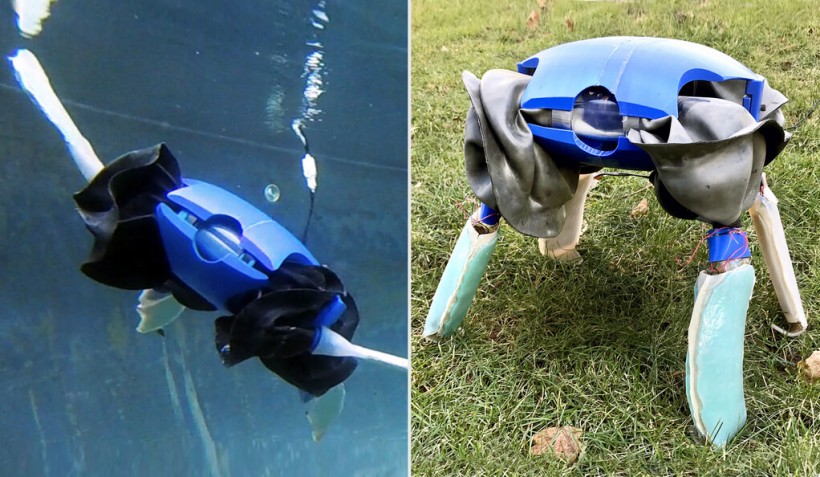Yale researchers share with the world its latest development in robotics, and it is with an amphibious turtle that can walk on land and swim on bodies of water to deliver on its requirements and purpose.
The new robot can turn its legs into flippers, and it would debut many applications for its owners' needs, especially in supporting and help to the marine ecosystem.
The significant development aims to bring assistance to multiple demands in the preservation and improvement of underwater, a device that is available for wet and dry applications.
Yale's Amphibious Turtle Robot

(Photo : Yale University)
A press release from Yale University shares its researchers' development for all, debuting an amphibious turtle robot that has countless applications in the world's marine life. The device can swim on different bodies of water and walk on land to return to its owners or bring data that it gathered from below the surface.
The bot, also known as ART or Amphibious Robotic Turtle, talks inspiration from the famous reptiles that can live and prosper in both land and water.
ART aims to deliver multiple purposes for its underwater and land research, including help for other aquatic robots who find it hard to venture into the water due to tides and currents.
Read Also: Touchlab Will Roll Out a Three-Month Trial for Its Robotic Skin Sensors
Features and Capabilities
The team from Yale published their findings and development in Nature's publication, and it discussed the device's capabilities and features for future use.
One would be its legs that can adapt to the environment they are in, either transforming as strong and load-bearing legs on land or turning into flippers that sea turtles mostly use. Its legs are both durable and applicable for the land and water, a feature that delivers on both the land or sea turtle's capabilities.
According to its researchers, it will also focus on "monitoring of ecosystems along shorelines, diver support, and ocean farming."
Robotics Development
The world is seeing massive developments in the robotic world every day, and automated devices also deliver a special feature that allows them to think and do their tasks. Most robots now receive artificial intelligence, and one example of that is Ai-Da, the female robot from Aidan Miller who recently addressed the UK's House of Lords in a committee hearing.
Robotics development is a significant focus now, especially as it aims to help society in doing jobs better, but not necessarily replace humans to perform their tasks.
There are many classifications for robots and each has their purposes to bring its technology and service to humans. One example would be the autonomous delivery robot from Pizza Hut that takes on the streets with its wheels and body that can store boxes of pizza and other items from the company's menu, straight to your home.
With the many robotic developments available in the world now, innovation like Yale's amphibious turtle aims to transform and help different applications, one that will focus on marine biodiversity. The turtle can fill in many gaps in its underwater ventures, one of which will further the device and assist humans in their quest to improve marine life.
Related Article: This New Smart Plastic Material Could Develop Flexible Robots, Electronics Someday
This article is owned by TechTimes
Written by Isaiah Richard








